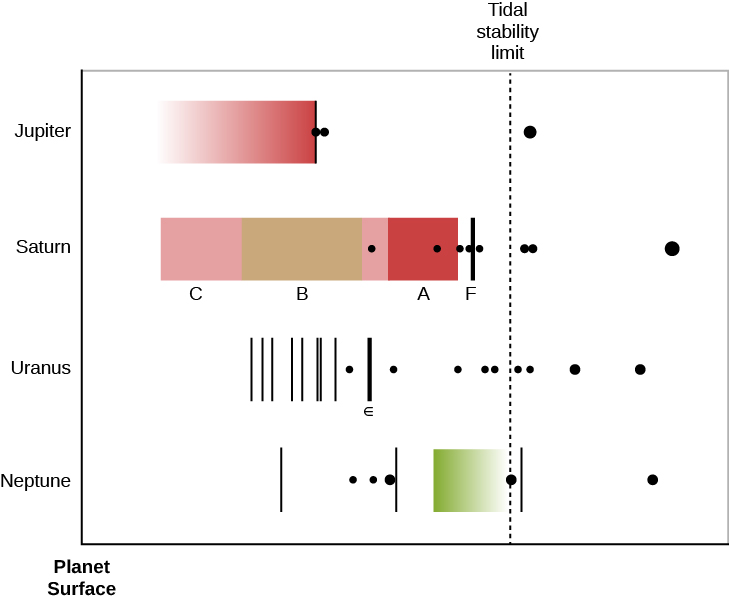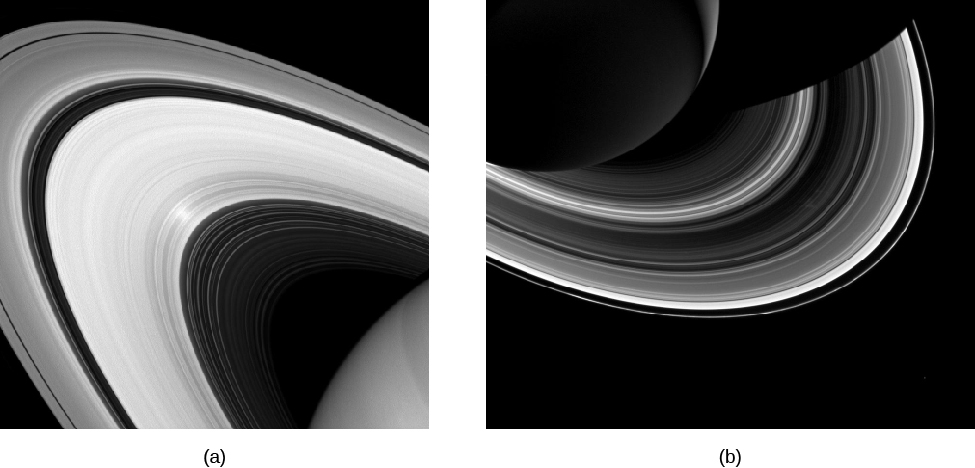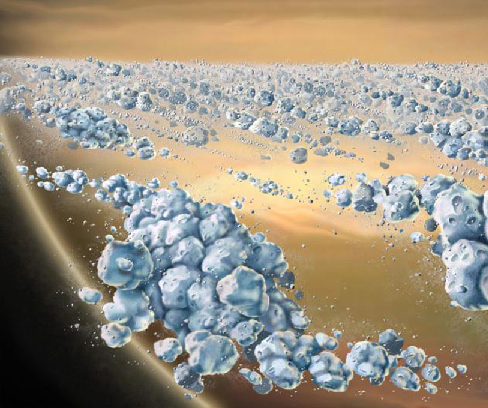| << Chapter < Page | Chapter >> Page > |

Saturn’s rings are one of the most beautiful sights in the solar system ( [link] ). From outer to inner, the three brightest rings are labeled with the extremely unromantic names of A, B, and C Rings. [link] gives the dimensions of the rings in both kilometers and units of the radius of Saturn, R Saturn . The B Ring is the brightest and has the most closely packed particles, whereas the A and C Rings are translucent.
The total mass of the B Ring, which is probably close to the mass of the entire ring system, is about equal to that of an icy moon 250 kilometers in diameter (suggesting that the ring could have originated in the breakup of such a moon). Between the A and B Rings is a wide gap named the Cassini Division after Gian Domenico Cassini, who first glimpsed it through a telescope in 1675 and whose name planetary scientists have also given to the Cassini spacecraft exploring the Saturn system.

| Selected Features in the Rings of Saturn | |||
|---|---|---|---|
| Ring Name The ring letters are assigned in the order of their discovery. | Outer Edge
( R Saturn ) |
Outer Edge
(km) |
Width
(km) |
| F | 2.324 | 140,180 | 90 |
| A | 2.267 | 136,780 | 14,600 |
| Cassini Division | 2.025 | 122,170 | 4590 |
| B | 1.949 | 117,580 | 25,580 |
| C | 1.525 | 92,000 | 17,490 |
Saturn’s rings are very broad and very thin. The width of the main rings is 70,000 kilometers, yet their average thickness is only 20 meters. If we made a scale model of the rings out of paper, we would have to make them 1 kilometer across. On this scale, Saturn itself would loom as high as an 80-story building. The ring particles are composed primarily of water ice, and they range from grains the size of sand up to house-sized boulders. An insider’s view of the rings would probably resemble a bright cloud of floating snowflakes and hailstones, with a few snowballs and larger objects, many of them loose aggregates of smaller particles ( [link] ).

In addition to the broad A, B, and C Rings, Saturn has a handful of very narrow rings no more than 100 kilometers wide. The most substantial of these, which lies just outside the A Ring, is called the F Ring ; its surprising appearance is discussed below. In general, Saturn’s narrow rings resemble the rings of Uranus and Neptune.

Notification Switch
Would you like to follow the 'Astronomy' conversation and receive update notifications?